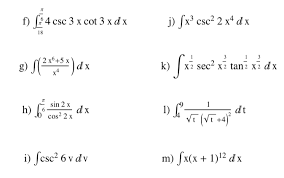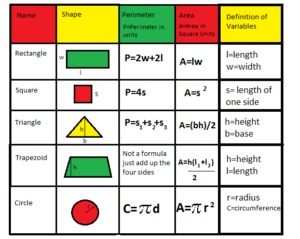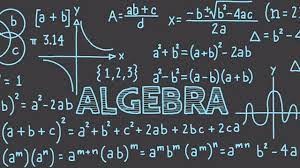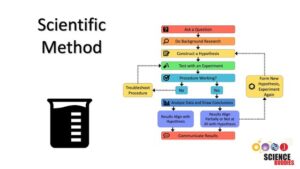The Theory of Evolution is one of the most fundamental and transformative concepts in biology. Developed over centuries, it has reshaped our understanding of life on Earth, how species adapt, and how life is interconnected. At its core, the Theory of Evolution explains how life has changed over time and how the diversity of life forms we see today arose from common ancestors.
This article provides a comprehensive overview of the Theory of Evolution, tracing its origins, explaining its key principles, and exploring its significance in modern science.
What is the Theory of Evolution?
The Theory of Evolution, simply put, is the scientific explanation for the process through which living organisms change and adapt over time. The central concept is that species are not fixed, and they evolve over generations through small changes in their genetic material, which may result in new traits that enhance survival and reproduction.
Charles Darwin, the British naturalist who is often credited with formulating the modern theory of evolution, provided compelling evidence for this process in his groundbreaking work On the Origin of Species, published in 1859. His theory was revolutionary in that it proposed that all species of life are connected by common ancestry and that they evolve through a process of natural selection.
Key Concepts of the Theory of Evolution
1. Natural Selection
Natural selection is the process by which certain traits become more common in a population over time because they provide an advantage in the organism’s environment. Organisms with traits that enhance their ability to survive and reproduce are more likely to pass those traits to their offspring. Over generations, these advantageous traits become more frequent, while less beneficial traits may fade away.
For example, in a population of beetles, those with darker coloring may be less visible to predators than lighter-colored beetles. As a result, the darker beetles are more likely to survive and reproduce, passing on their dark coloration to future generations. Over time, this trait becomes more prevalent in the population.
2. Genetic Variation
Genetic variation refers to the differences in genetic makeup among individuals within a population. This variation is essential for evolution because it provides the raw material for natural selection to act upon. Genetic variation can arise through mutations (random changes in DNA), genetic recombination (mixing of genes during reproduction), and migration (movement of individuals between populations).
Without genetic variation, populations would not be able to adapt to changing environments, making them more susceptible to extinction.
3. Adaptation
Adaptation refers to the process by which organisms become better suited to their environment. Adaptations can be structural, behavioral, or physiological changes that improve an organism’s chances of survival and reproduction. For example, the long neck of a giraffe is an adaptation that allows it to reach leaves high in trees, providing a food source that other herbivores cannot access.
Adaptations evolve over long periods of time, and they may be the result of natural selection acting on advantageous genetic variations.
4. Speciation
Speciation is the process by which one species evolves into two or more distinct species. This occurs when populations of a species become isolated from one another and accumulate enough genetic differences that they can no longer interbreed. Over time, these differences may result in the formation of new species.
Speciation can occur through various mechanisms, such as geographic isolation (when a physical barrier, like a mountain range or river, separates populations), reproductive isolation (when populations evolve different mating behaviors or timing), or ecological isolation (when populations adapt to different niches within the same environment).
5. Common Descent
One of the central tenets of the Theory of Evolution is the idea of common descent—the idea that all living organisms share a common ancestor. This concept means that all species, from bacteria to humans, are related and have evolved from a common origin. Over millions of years, species have diverged and adapted to their environments, leading to the diversity of life that exists today.
The evidence for common descent comes from several sources, including comparative anatomy (the study of similarities and differences in the structure of organisms), molecular biology (the comparison of DNA sequences), and the fossil record.
The History of the Theory of Evolution
Although Charles Darwin is the most famous figure associated with the Theory of Evolution, the idea of species changing over time has roots in ancient history. Greek philosophers such as Anaximander (6th century BCE) suggested that species could change over time, though they did not have a mechanism to explain how this occurred.
In the 18th century, naturalists like Georges-Louis Leclerc (Comte de Buffon) and Jean-Baptiste Lamarck proposed early versions of evolutionary ideas. Lamarck, in particular, suggested that organisms could change over time through the inheritance of acquired traits. While his ideas were later debunked, his work helped lay the foundation for the acceptance of evolutionary thought.
However, it was Darwin’s theory of natural selection that provided the mechanism by which evolution could occur. Darwin was influenced by the work of naturalists like Alfred Russel Wallace, who independently developed similar ideas about evolution through natural selection.
Darwin’s observations during his voyage on HMS Beagle to the Galápagos Islands in the 1830s were particularly influential. There, he noticed that different islands had different species of finches, each with beaks adapted to the specific food sources available. This observation helped Darwin formulate his theory that species evolve over time based on environmental pressures.
Evidence Supporting the Theory of Evolution
The Theory of Evolution is supported by multiple lines of evidence:
1. Fossil Record
The fossil record provides a historical account of life on Earth. Fossils show us the remains of organisms that lived in the past and help us trace the evolution of species over time. Fossils of transitional forms—organisms that exhibit characteristics of two different groups—provide strong evidence for the gradual change of species over millions of years.
For example, the fossil record of whales shows a gradual transition from land-dwelling mammals to fully aquatic creatures, with intermediate forms that exhibit features of both land animals and modern whales.
2. Comparative Anatomy
Comparative anatomy involves comparing the physical structures of different species. Homologous structures—features that are similar in different species because they share a common ancestor—provide evidence of evolutionary relationships. For example, the forelimbs of humans, bats, whales, and dogs have a similar bone structure, despite being adapted for different functions. This suggests that these species share a common ancestor.
3. Molecular Biology
DNA analysis has revealed the molecular evidence for evolution. The genetic code is universal, meaning that all living organisms share the same basic genetic language. By comparing the DNA of different species, scientists can determine how closely related they are and trace their evolutionary history.
For example, humans share about 98% of their DNA with chimpanzees, which suggests a common ancestor. Similarly, the genetic similarity between humans and other species like mice and fruit flies highlights the deep evolutionary connections among all life forms.
4. Biogeography
Biogeography is the study of the geographic distribution of species. The distribution of species around the world provides insight into how species evolved. For example, the isolation of species on different continents due to the breakup of Pangaea (the supercontinent that existed millions of years ago) has led to the development of distinct species in different regions.
The Impact of the Theory of Evolution
The Theory of Evolution has had a profound impact on many fields of science, including biology, genetics, paleontology, and anthropology. It has revolutionized our understanding of the natural world and provided a unifying framework for explaining the diversity of life on Earth.
Moreover, the theory has implications beyond science. It has influenced philosophy, theology, and education, sparking debates over the nature of life, the origin of species, and the relationship between science and religion.
Conclusion
The Theory of Evolution is one of the cornerstones of modern biology, offering a comprehensive explanation for how life has changed and diversified over time. It is supported by a vast body of evidence from multiple scientific disciplines, and its principles—such as natural selection, genetic variation, and adaptation—are central to our understanding of life on Earth.
The journey of life, from simple organisms to the complex diversity we see today, is a story of constant change, adaptation, and survival. As our understanding of evolution continues to grow, so too does our appreciation for the intricate processes that have shaped life on this planet.
The Theory of Evolution is not just a scientific theory; it is a testament to the power of observation, curiosity, and the relentless pursuit of knowledge.




